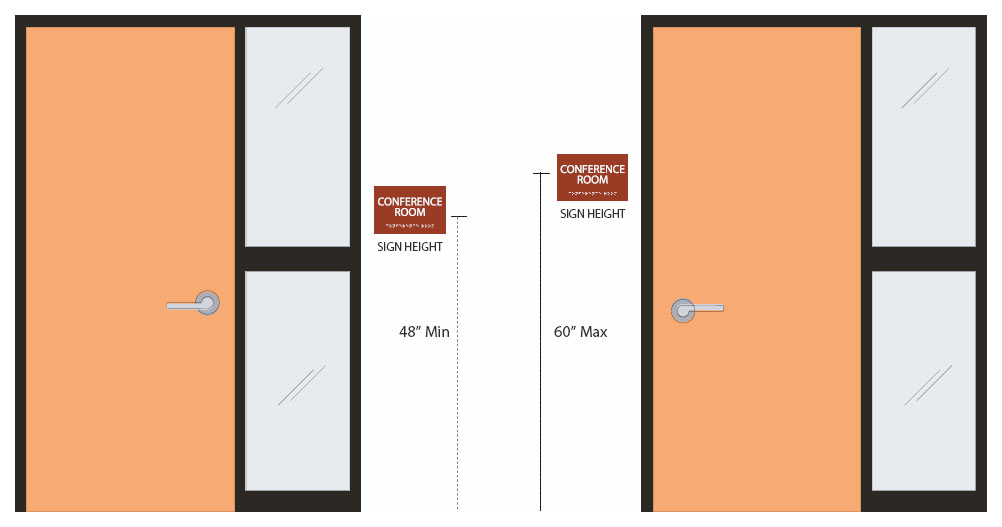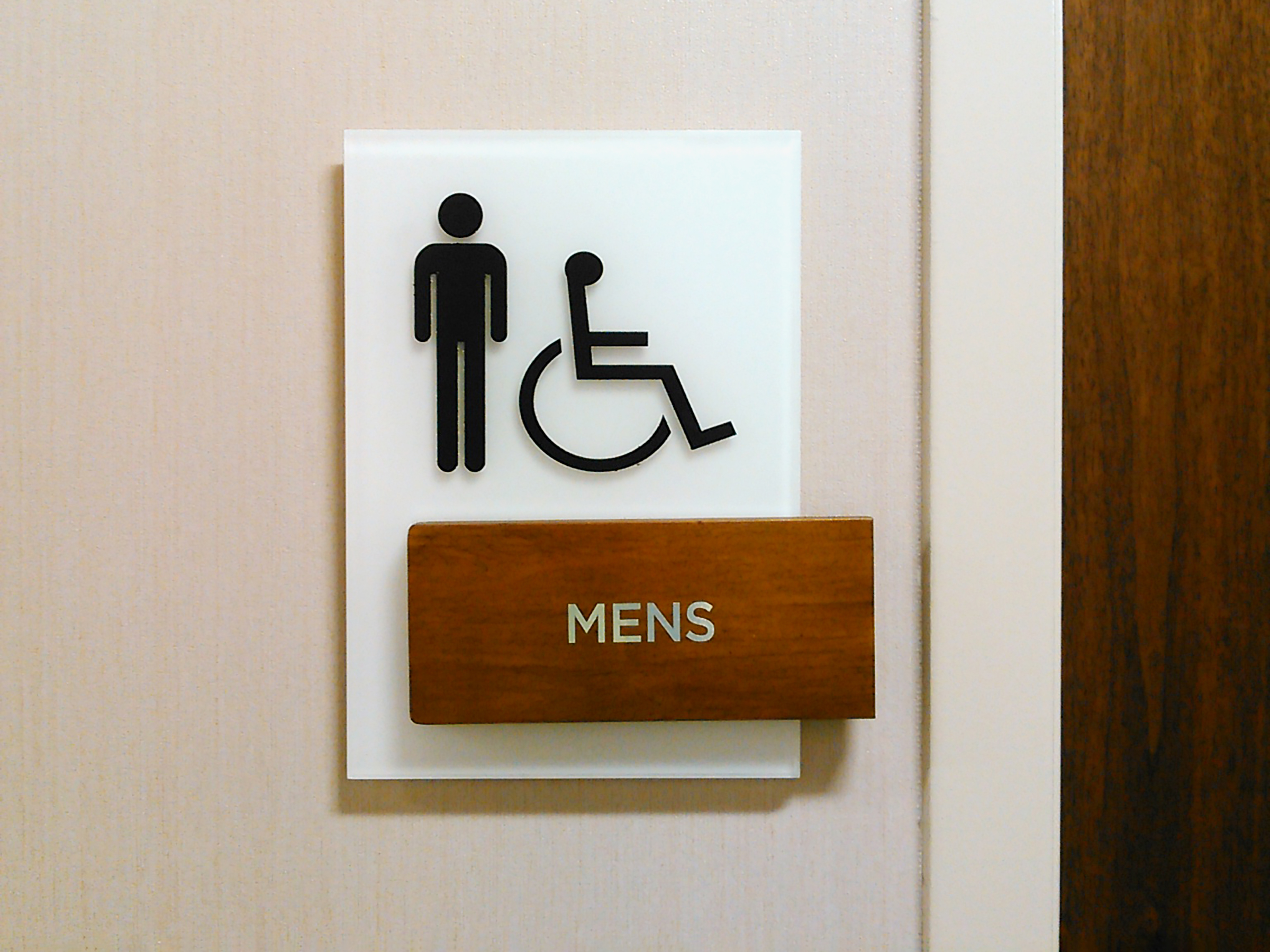Personalizing ADA Signs to Meet Your Certain Needs
Personalizing ADA Signs to Meet Your Certain Needs
Blog Article
Checking Out the Secret Features of ADA Signs for Boosted Access
In the realm of accessibility, ADA indicators serve as silent yet effective allies, ensuring that areas are accessible and comprehensive for people with disabilities. By incorporating Braille and tactile components, these signs damage obstacles for the visually impaired, while high-contrast shade systems and clear typefaces provide to diverse aesthetic demands.
Value of ADA Compliance
Making certain compliance with the Americans with Disabilities Act (ADA) is vital for cultivating inclusivity and equal accessibility in public spaces and work environments. The ADA, passed in 1990, mandates that all public centers, employers, and transport solutions fit people with impairments, guaranteeing they appreciate the same rights and chances as others. Compliance with ADA requirements not just meets lawful obligations but also improves an organization's track record by showing its commitment to variety and inclusivity.
Among the crucial facets of ADA conformity is the execution of accessible signage. ADA signs are designed to guarantee that individuals with impairments can easily navigate through buildings and spaces. These signs should follow details guidelines relating to dimension, typeface, shade comparison, and positioning to ensure exposure and readability for all. Correctly executed ADA signage helps remove obstacles that individuals with specials needs commonly come across, consequently promoting their independence and self-confidence (ADA Signs).
Furthermore, adhering to ADA policies can mitigate the risk of lawful consequences and prospective fines. Organizations that fall short to conform with ADA guidelines may face penalties or lawsuits, which can be both harmful and monetarily troublesome to their public picture. Thus, ADA conformity is integral to promoting an equitable atmosphere for every person.
Braille and Tactile Aspects
The unification of Braille and tactile components into ADA signs personifies the principles of access and inclusivity. These features are critical for individuals that are blind or visually impaired, allowing them to navigate public rooms with greater self-reliance and self-confidence. Braille, a responsive writing system, is vital in providing composed info in a layout that can be easily viewed with touch. It is typically placed underneath the equivalent text on signage to guarantee that people can access the details without visual assistance.
Responsive aspects prolong beyond Braille and include increased characters and signs. These components are made to be noticeable by touch, allowing people to recognize area numbers, toilets, exits, and various other critical locations. The ADA sets particular guidelines regarding the dimension, spacing, and positioning of these responsive components to maximize readability and make sure consistency throughout various atmospheres.

High-Contrast Color Schemes
High-contrast color pattern play an essential role in enhancing the presence and readability of ADA signage for individuals with aesthetic disabilities. These schemes are important as they make the most of the difference in light reflectance in between message and background, ensuring that indicators are conveniently discernible, even from a distance. The Americans with Disabilities Act (ADA) mandates using particular color contrasts to fit those with limited vision, making it a critical element of conformity.
The effectiveness of high-contrast colors hinges on their capability to stand out in various lights conditions, consisting of poorly lit atmospheres and locations with glare. Commonly, dark text on a light history or light message on a dark background is used to achieve ideal comparison. For example, black message on a white or yellow history gives a plain aesthetic difference that helps in fast acknowledgment and understanding.

Legible Fonts and Text Dimension
When thinking about the design of ADA signage, the selection of understandable font styles and suitable message size can not be overemphasized. The Americans with Disabilities Act (ADA) mandates that font styles should be not italic and sans-serif, oblique, manuscript, highly attractive, or of unusual kind.
The dimension of the text likewise plays a critical duty in ease of access. According to ADA standards, the minimal text height should be 5/8 inch, and it should enhance proportionally with checking out distance. This is particularly important in public areas where signage requirements to be checked out rapidly and properly. Uniformity in message size adds to a natural visual experience, aiding individuals in browsing atmospheres efficiently.
Moreover, spacing between letters and lines is indispensable to legibility. Ample spacing avoids personalities from showing up crowded, boosting readability. By adhering to these standards, developers can substantially enhance accessibility, ensuring that signs offers its desired function for all individuals, regardless of their aesthetic capacities.
Efficient Positioning Strategies
Strategic positioning of ADA signs is crucial for optimizing access and making certain conformity with lawful criteria. ADA standards stipulate that signs ought to be installed at an elevation between 48 to 60 inches from the ground to guarantee they are this content within the line of view for both standing and seated individuals.
Furthermore, signs need to be put adjacent to the lock side of doors to enable easy recognition prior to entry. Consistency in indicator placement throughout a facility boosts predictability, lowering complication and improving total individual experience.

Verdict
ADA indications play a crucial duty in advertising access by incorporating attributes that attend to the demands of people with specials needs. These aspects jointly promote an inclusive atmosphere, highlighting the significance of ADA compliance in guaranteeing equal access for all.
In the realm of ease of access, ADA indicators offer as quiet yet effective allies, making certain that areas are comprehensive and accessible for individuals with impairments. The ADA, enacted in 1990, mandates that all public centers, companies, and transportation services suit people with impairments, ensuring they enjoy the same civil liberties and chances as others. ADA Signs. ADA indications are developed to guarantee that individuals with disabilities can conveniently navigate through rooms and buildings. ADA standards stipulate that indicators must be mounted at an elevation between click reference 48 to 60 inches from the ground to guarantee they are within the line of sight for both standing and seated individuals.ADA indications play an important duty in promoting accessibility by incorporating features that resolve the requirements of people with impairments
Report this page